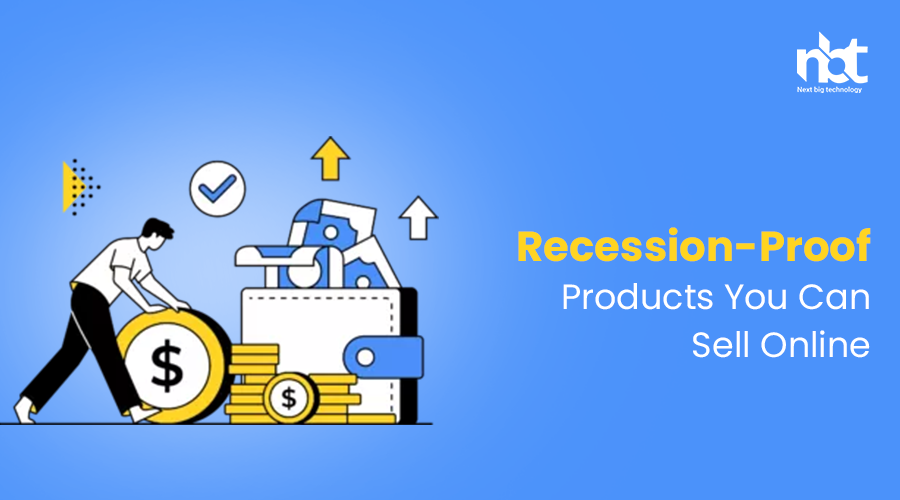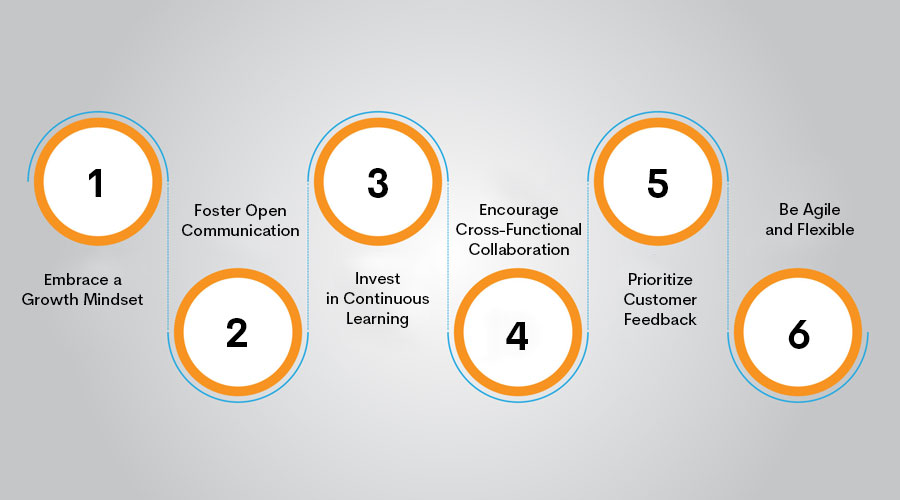Table of Contents
Introduction to Recession-Proof Products
In today’s uncertain economic climate, consumers and businesses alike are constantly seeking ways to safeguard themselves against the impacts of recessions. One such strategy involves investing in recession-proof products. These are goods and services that continue to thrive even during economic downturns, providing stability and resilience to both consumers and businesses. In this article, we’ll delve into the concept of recession-proof products, explore some examples across various industries, and discuss why they remain essential in times of financial turbulence.
Understanding Recession-Proof Products
Recession-proof products are items that maintain consistent demand regardless of the state of the economy. Unlike discretionary items, which consumers tend to cut back on during tough times, recession-proof products fulfill basic needs or offer indispensable solutions. They are often characterized by their essential nature, affordability, and the inability of consumers to easily forgo them even when money is tight.
Examples of Recession-Proof Products
- Food and Beverage: Basic food items such as grains, vegetables, and dairy products fall under this category. While consumers may cut back on dining out or purchasing luxury foods during a recession, they still need to feed themselves and their families. Hence, grocery stores and food manufacturers typically see relatively stable demand for essential food items.
- Healthcare and Pharmaceuticals: Health-related products and services, including medications, medical supplies, and healthcare services, are considered recession-proof. Illness and medical emergencies do not take a break during economic downturns, making healthcare a resilient industry.
- Utilities: Utilities such as electricity, water, and heating are essential for daily living and are thus recession-proof. Regardless of economic conditions, consumers prioritize paying their utility bills to ensure access to these basic services.
- Education and Training: Investing in education and skills development remains vital even during recessions. While individuals may cut back on non-essential education expenses, they often continue to pursue opportunities for learning and skill enhancement to improve their job prospects and adapt to changing market demands.
- Discount Retailers and Thrift Stores: During economic downturns, consumers become more price-conscious and seek bargains. Discount retailers and thrift stores offer affordable alternatives to traditional retail outlets, making them popular destinations for budget-conscious shoppers.
Importance of Recession-Proof Products
The significance of recession-proof products becomes particularly evident during times of economic instability. By investing in or providing these products, businesses can maintain a steady revenue stream, mitigate the effects of economic downturns, and even capitalize on opportunities for growth. For consumers, relying on recession-proof products ensures access to essential goods and services, promoting financial stability and peace of mind during uncertain times.
Digital Goods: The Resilient Frontier of Online Sales
In the ever-evolving landscape of e-commerce, digital goods have emerged as the resilient frontier of online sales. With the proliferation of digital technology and the internet, the sale of digital goods has witnessed an unprecedented surge, reshaping the way we consume and distribute products and services. From e-books and software to music and online courses, digital goods encompass a wide array of products that can be delivered electronically, transcending geographical boundaries and traditional retail limitations.
One of the key factors driving the popularity of digital goods is their convenience and accessibility. Unlike physical products, digital goods can be instantly delivered to consumers through electronic channels, eliminating the need for shipping and logistics. This instant gratification appeals to today’s consumers who value convenience and efficiency in their shopping experience. Whether it’s downloading an e-book to their e-reader or purchasing a software license key online, digital goods offer unparalleled convenience that traditional retail cannot match.
Furthermore, the scalability of digital goods enables businesses to reach a global audience with minimal overhead costs. With the click of a button, digital products can be distributed to customers worldwide, opening up new revenue streams and market opportunities. This scalability not only benefits established companies but also empowers independent creators and entrepreneurs to monetize their skills and expertise. Platforms like Etsy, Udemy, and Bandcamp have democratized the sale of digital goods, allowing individuals to showcase their talents and connect with a global audience.
Moreover, the COVID-19 pandemic has accelerated the adoption of digital goods as consumers increasingly turn to online platforms for their shopping needs. With lockdowns and social distancing measures in place, digital goods offer a safe and convenient alternative to traditional retail. From virtual events and livestream concerts to online fitness classes and digital art galleries, businesses across industries are leveraging digital platforms to engage customers and drive sales.
Niche Markets: Exploring Untapped Opportunities
In the ever-evolving landscape of e-commerce, digital goods have emerged as the resilient frontier of online sales. With the proliferation of digital technology and the internet, the sale of digital goods has witnessed an unprecedented surge, reshaping the way we consume and distribute products and services. From e-books and software to music and online courses, digital goods encompass a wide array of products that can be delivered electronically, transcending geographical boundaries and traditional retail limitations.
One of the key factors driving the popularity of digital goods is their convenience and accessibility. Unlike physical products, digital goods can be instantly delivered to consumers through electronic channels, eliminating the need for shipping and logistics. This instant gratification appeals to today’s consumers who value convenience and efficiency in their shopping experience. Whether it’s downloading an e-book to their e-reader or purchasing a software license key online, digital goods offer unparalleled convenience that traditional retail cannot match.
Furthermore, the scalability of digital goods enables businesses to reach a global audience with minimal overhead costs. With the click of a button, digital products can be distributed to customers worldwide, opening up new revenue streams and market opportunities. This scalability not only benefits established companies but also empowers independent creators and entrepreneurs to monetize their skills and expertise. Platforms like Etsy, Udemy, and Bandcamp have democratized the sale of digital goods, allowing individuals to showcase their talents and connect with a global audience.
Moreover, the COVID-19 pandemic has accelerated the adoption of digital goods as consumers increasingly turn to online platforms for their shopping needs. With lockdowns and social distancing measures in place, digital goods offer a safe and convenient alternative to traditional retail. From virtual events and livestream concerts to online fitness classes and digital art galleries, businesses across industries are leveraging digital platforms to engage customers and drive sales.
Health and Wellness: Evergreen Demands in Any Economy
In a world marked by fluctuating economies and unpredictable markets, one sector remains steadfast and unwavering: health and wellness. Irrespective of economic conditions, the pursuit of health and wellness stands as a constant priority for individuals and societies alike. This enduring demand not only reflects fundamental human needs but also underscores the intrinsic value placed on well-being across cultures and generations.
Health and wellness encompass a broad spectrum of practices, products, and services aimed at promoting physical, mental, and emotional well-being. From preventive healthcare measures to holistic therapies, the industry caters to diverse needs and preferences, making it resilient to economic downturns. In fact, during times of financial instability, people often prioritize their health even more, recognizing it as an invaluable investment in their overall quality of life.
The significance of health and wellness transcends mere consumerism; it extends to societal welfare and economic sustainability. A healthier population is not only more productive but also places less strain on healthcare systems, thereby reducing healthcare costs in the long run. Additionally, the rise of preventive healthcare measures fosters a proactive approach to well-being, mitigating the burden of chronic diseases and promoting healthier aging populations.
One of the driving forces behind the enduring demand for health and wellness is the growing awareness of the link between lifestyle choices and health outcomes. With access to vast amounts of information, individuals are empowered to make informed decisions about their health, leading to increased participation in activities such as regular exercise, balanced nutrition, and stress management. Consequently, businesses within the health and wellness sector continue to innovate and diversify their offerings to cater to this evolving consumer mindset.
Moreover, the rise of digital technology has revolutionized the health and wellness landscape, making information and services more accessible than ever before. Mobile health apps, wearable devices, and telemedicine platforms have democratized healthcare, enabling individuals to monitor their health, seek professional advice, and access personalized wellness programs from the convenience of their smartphones. This integration of technology not only enhances convenience but also fosters greater engagement and accountability in managing one’s health.
In light of these factors, the health and wellness industry is poised for sustained growth, regardless of economic fluctuations. As consumers prioritize self-care and well-being, businesses that prioritize innovation, accessibility, and consumer-centric approaches are well-positioned to thrive in this evergreen market. Furthermore, governments and policymakers play a crucial role in supporting the expansion of health and wellness initiatives through conducive regulatory frameworks, public health campaigns, and investments in healthcare infrastructure.
Home Essentials: Meeting Basic Needs with Online Retail
In today’s fast-paced world, the convenience of online shopping has become an indispensable part of our lives. From groceries to gadgets, we rely on e-commerce platforms to meet our daily needs. Among these essential purchases, home essentials stand out as items crucial for maintaining comfort and functionality within our living spaces. This article explores the significance of online retail in fulfilling these basic requirements and ensuring a seamless lifestyle.
Convenience at Your Fingertips: Gone are the days when stocking up on household necessities required a trip to multiple stores. With the click of a button, online retail platforms offer a vast array of products, ranging from toiletries to kitchen supplies, conveniently delivered to your doorstep. This accessibility eliminates the hassle of navigating through crowded aisles and waiting in long queues, allowing for more efficient use of time and resources.
Diverse Product Range: Online retailers boast an extensive selection of home essentials, catering to diverse preferences and requirements. Whether you’re in need of cleaning supplies, bedding, or kitchen appliances, these platforms offer a plethora of choices to suit every budget and taste. Furthermore, users can easily compare prices, read reviews, and make informed decisions, ensuring satisfaction with their purchases.
Time-Saving Solutions: In today’s hectic lifestyle, time is of the essence. Online shopping offers a time-saving solution by streamlining the procurement process. Instead of spending precious hours commuting to physical stores, consumers can browse through products online, place orders within minutes, and have them delivered at their convenience. This efficiency not only enhances productivity but also allows individuals to allocate more time to other aspects of their lives.
Seamless Shopping Experience: The user-friendly interfaces of online retail platforms enhance the overall shopping experience. With intuitive navigation and personalized recommendations, users can effortlessly find the products they need without any hassle. Moreover, features such as saved preferences and auto-replenishment options simplify the process of restocking home essentials, ensuring a seamless and stress-free experience for customers.
Accessibility for All: Online retail transcends geographical barriers, making home essentials accessible to individuals across the globe. Whether you reside in a bustling city or a remote rural area, you can easily procure essential items without being limited by proximity to physical stores. This inclusivity ensures that everyone, regardless of their location, has access to the products they need to maintain a comfortable living environment.
DIY and Self-Sufficiency: Trends in Recession-Resistant Consumer Behavior
In today’s uncertain economic landscape, the concept of self-sufficiency has taken center stage. As individuals seek ways to weather financial storms, the resurgence of do-it-yourself (DIY) practices has become more than just a hobby; it’s a lifestyle choice and a testament to resilience. With recession-resistant consumer behavior on the rise, let’s delve into the trends driving the DIY movement and explore how it fosters self-sufficiency in various aspects of life.
The Rise of Recession-Resistant DIY Culture: In times of economic downturns, consumers tend to become more frugal and resourceful. This shift in mindset has fueled the popularity of DIY culture. From growing one’s food to making household items and even crafting personal care products, people are increasingly embracing self-sufficiency as a means of reducing expenses and reliance on external sources.
Sustainability and Cost-Effectiveness: One of the primary drivers behind the DIY trend is the desire for sustainability and cost-effectiveness. By growing their vegetables, for example, individuals can reduce their carbon footprint, minimize packaging waste, and save money on grocery bills. Similarly, crafting homemade cleaning products using natural ingredients not only promotes a healthier living environment but also cuts down on expenses associated with store-bought alternatives.
Empowerment Through Skill Acquisition: Engaging in DIY projects empowers individuals to learn new skills and gain practical knowledge. Whether it’s woodworking, sewing, or home repairs, mastering these skills not only enhances self-reliance but also provides a sense of accomplishment and confidence. In an uncertain economy, possessing a diverse set of skills can increase employability and open up alternative sources of income.
Community Building and Collaboration: The DIY movement fosters a sense of community and collaboration among like-minded individuals. Whether through local workshops, online forums, or social media groups, DIY enthusiasts come together to share knowledge, exchange ideas, and support one another in their endeavors. This sense of camaraderie not only enriches the experience but also strengthens resilience by building networks of mutual assistance.
Adapting to Changing Circumstances: In times of recession or economic instability, self-sufficiency offers a buffer against financial strain. By reducing dependence on external goods and services, individuals can better navigate fluctuations in the market and unforeseen disruptions. Whether it’s through growing a garden to supplement food supplies or learning to repair household appliances, DIY practices provide practical solutions for adapting to changing circumstances.
Affordable Luxury: Catering to Frugal Yet Aspirational Consumers
In a world where the pursuit of luxury often comes with a hefty price tag, there exists a growing demographic of consumers who seek the finer things in life without breaking the bank. This burgeoning market segment, often dubbed as “frugal yet aspirational,” is reshaping the landscape of luxury goods and services. With a keen eye for value and quality, these consumers are driving the demand for affordable luxury products and experiences.
Affordable luxury is not about compromising on quality or style; instead, it’s about finding the perfect balance between cost and indulgence. Whether it’s a designer handbag at a fraction of the price, a gourmet meal at a budget-friendly restaurant, or a weekend getaway at a boutique hotel, affordable luxury caters to those who want to elevate their lifestyle without emptying their wallets.
One of the key factors driving the rise of affordable luxury is the democratization of access to information and products. Thanks to the internet and social media, consumers have unparalleled access to a wealth of information about brands, products, and pricing. This transparency has empowered consumers to make more informed purchasing decisions, enabling them to find high-quality, luxurious items at competitive prices.
Moreover, the shift towards sustainable and ethical consumption has also influenced the demand for affordable luxury. Today’s consumers are increasingly conscious of the environmental and social impact of their purchasing decisions. As a result, they are drawn to brands that offer affordable luxury products with a focus on sustainability, ethical sourcing, and craftsmanship.
In response to this evolving consumer landscape, brands across industries are reimagining their strategies to cater to the needs of frugal yet aspirational consumers. From fashion houses offering affordable diffusion lines to luxury hotels providing discounted packages during off-peak seasons, businesses are finding innovative ways to make luxury more accessible.
One notable trend in the affordable luxury market is the rise of rental and subscription services. Companies like Rent the Runway and The RealReal have capitalized on the desire for luxury experiences without the long-term commitment of ownership. By allowing consumers to rent or subscribe to designer clothing, accessories, and even luxury homes, these services offer a taste of the good life at a fraction of the cost.
Sustainable and Eco-Friendly Products: Aligning with Conscious Consumerism
In today’s world, there’s a growing awareness of the environmental impact of our consumer choices. As a result, more people are embracing conscious consumerism, seeking out products that are not only high-quality but also sustainable and eco-friendly. This shift towards mindful consumption has paved the way for a rise in demand for products that prioritize environmental responsibility. Let’s delve deeper into how sustainable and eco-friendly products align with conscious consumerism.
Understanding Conscious Consumerism: Conscious consumerism goes beyond simply buying products; it’s a mindset that considers the broader implications of consumer choices. Conscious consumers are mindful of the social, environmental, and ethical aspects of the products they purchase. They seek transparency from brands, looking for information on sourcing, production processes, and the overall impact on the planet.
The Rise of Sustainable and Eco-Friendly Products: In response to the demand for more responsible consumption, many companies are incorporating sustainability into their business models. Sustainable and eco-friendly products are designed with the environment in mind, from sourcing raw materials to manufacturing processes and packaging.
These products often utilize renewable resources, minimize waste, and reduce carbon emissions. Whether it’s organic clothing made from ethically sourced cotton, biodegradable packaging materials, or energy-efficient appliances, there’s a wide range of options available for conscious consumers.
Benefits of Choosing Eco-Friendly Products: Opting for sustainable and eco-friendly products offers numerous benefits, both for individuals and the planet. Firstly, such products help reduce our carbon footprint, mitigating the impact of climate change. By supporting eco-friendly brands, consumers contribute to the preservation of natural resources and biodiversity.
Moreover, many eco-friendly products are of high quality and durability, leading to longer lifespans and fewer replacements. This not only saves money in the long run but also reduces waste generated by disposable items.
Empowering Change Through Consumer Choices: Every purchase we make is a vote for the kind of world we want to live in. By consciously choosing sustainable and eco-friendly products, consumers send a powerful message to businesses and industries. They demonstrate a demand for responsible practices and encourage companies to prioritize environmental stewardship.
Furthermore, conscious consumerism fosters a sense of accountability and empowerment. It allows individuals to align their values with their purchasing decisions, creating a ripple effect that can drive positive change on a larger scale.
Digital Services: Leveraging Skills and Expertise for Remote Work
In today’s world, there’s a growing awareness of the environmental impact of our consumer choices. As a result, more people are embracing conscious consumerism, seeking out products that are not only high-quality but also sustainable and eco-friendly. This shift towards mindful consumption has paved the way for a rise in demand for products that prioritize environmental responsibility. Let’s delve deeper into how sustainable and eco-friendly products align with conscious consumerism.
Understanding Conscious Consumerism: Conscious consumerism goes beyond simply buying products; it’s a mindset that considers the broader implications of consumer choices. Conscious consumers are mindful of the social, environmental, and ethical aspects of the products they purchase. They seek transparency from brands, looking for information on sourcing, production processes, and the overall impact on the planet.
The Rise of Sustainable and Eco-Friendly Products: In response to the demand for more responsible consumption, many companies are incorporating sustainability into their business models. Sustainable and eco-friendly products are designed with the environment in mind, from sourcing raw materials to manufacturing processes and packaging.
These products often utilize renewable resources, minimize waste, and reduce carbon emissions. Whether it’s organic clothing made from ethically sourced cotton, biodegradable packaging materials, or energy-efficient appliances, there’s a wide range of options available for conscious consumers.
Benefits of Choosing Eco-Friendly Products: Opting for sustainable and eco-friendly products offers numerous benefits, both for individuals and the planet. Firstly, such products help reduce our carbon footprint, mitigating the impact of climate change. By supporting eco-friendly brands, consumers contribute to the preservation of natural resources and biodiversity.
Moreover, many eco-friendly products are of high quality and durability, leading to longer lifespans and fewer replacements. This not only saves money in the long run but also reduces waste generated by disposable items.
Empowering Change Through Consumer Choices: Every purchase we make is a vote for the kind of world we want to live in. By consciously choosing sustainable and eco-friendly products, consumers send a powerful message to businesses and industries. They demonstrate a demand for responsible practices and encourage companies to prioritize environmental stewardship.
Furthermore, conscious consumerism fosters a sense of accountability and empowerment. It allows individuals to align their values with their purchasing decisions, creating a ripple effect that can drive positive change on a larger scale.
Adaptability and Innovation: Strategies for Sustained Success in Challenging Times
In today’s ever-evolving landscape, businesses face a multitude of challenges, ranging from economic uncertainty to rapid technological advancements and global crises. In such turbulent times, the ability to adapt and innovate becomes paramount for not just surviving, but thriving. Companies that embrace these strategies are better positioned to weather storms and achieve sustained success in the long run.
Adaptability is the cornerstone of resilience in the face of uncertainty. It involves the willingness to adjust strategies, processes, and even business models in response to changing circumstances. Embracing adaptability means being agile and flexible, ready to pivot when necessary without losing sight of long-term goals. This requires a culture that encourages experimentation, fosters open communication, and values continuous learning. By staying attuned to market shifts and customer needs, adaptable organizations can stay ahead of the curve and maintain their competitive edge.
Innovation goes hand in hand with adaptability, serving as a catalyst for growth and differentiation. Rather than seeing challenges as obstacles, innovative companies view them as opportunities for creative problem-solving. They invest in research and development, encourage cross-functional collaboration, and cultivate a culture of innovation where ideas are welcomed and tested without fear of failure. By continuously seeking new ways to deliver value to customers and improve internal processes, innovative organizations can stay ahead of the curve and disrupt industries.
So, what are some practical strategies for fostering adaptability and innovation in your organization?
- Embrace a Growth Mindset: Encourage employees to embrace a growth mindset, where challenges are seen as opportunities for learning and growth rather than setbacks. Foster a culture where failure is viewed as a stepping stone to success, and employees are encouraged to take calculated risks.
- Foster Open Communication: Create channels for open communication and feedback within the organization. Encourage employees at all levels to share ideas, raise concerns, and contribute to problem-solving initiatives. By fostering a culture of transparency and collaboration, you can harness the collective intelligence of your team to drive innovation.
- Invest in Continuous Learning: Provide opportunities for employees to develop new skills and stay abreast of emerging trends in your industry. Offer training programs, workshops, and mentorship opportunities to support professional development and foster a culture of lifelong learning.
- Encourage Cross-Functional Collaboration: Break down silos and encourage collaboration across departments and teams. Cross-functional collaboration fosters creativity and allows for the exchange of diverse perspectives, leading to more innovative solutions to complex problems.
- Prioritize Customer Feedback: Listen to your customers and incorporate their feedback into your product development process. By understanding their needs and pain points, you can develop solutions that resonate with your target audience and drive customer satisfaction.
- Be Agile and Flexible: Be willing to adapt your strategies and plans in response to changing market conditions. Maintain a mindset of agility and flexibility, and be prepared to pivot quickly when necessary to seize new opportunities or mitigate risks.
Top Recession-Proof Products You Can Sell Online Companies
In today’s uncertain economic climate, finding recession-proof products to sell online can be a smart business move. With fluctuating markets and unpredictable consumer behavior, focusing on items that remain in demand regardless of economic downturns can help your business thrive. Whether you’re an established online retailer or considering starting your own e-commerce venture, here are some top recession-proof products that could be lucrative investments:
-
-
Next Big Technology:

Focus Area
- Mobile App Development
- App Designing (UI/UX)
- Software Development
- Web Development
- AR & VR Development
- Big Data & BI
- Cloud Computing Services
- DevOps
- E-commerce Development
Industries Focus
- Art, Entertainment & Music
- Business Services
- Consumer Products
- Designing
- Education
- Financial & Payments
- Gaming
- Government
- Healthcare & Medical
- Hospitality
- Information Technology
- Legal & Compliance
- Manufacturing
- Media
-
- Health and Wellness Products: Health is a top priority for consumers, even during tough times. Selling health and wellness products such as vitamins, supplements, fitness equipment, and personal care items can be a profitable niche. Highlight the benefits of your products for boosting immunity, reducing stress, and promoting overall well-being.
- DIY and Home Improvement Supplies: During economic downturns, many consumers opt to DIY home repairs and renovations instead of hiring professionals. Tap into this market by selling DIY tools, home improvement supplies, and instructional guides. Consider offering kits and bundles for common home improvement projects to simplify the shopping process for your customers.
- Education and Skill Development Resources: Investing in education and skill development remains a priority for individuals looking to improve their career prospects, even in a recession. Sell online courses, e-books, and educational materials covering a wide range of topics such as programming, digital marketing, language learning, and personal finance. Emphasize the value of acquiring new skills during challenging times to stay competitive in the job market.
- Pet Care Products: Pet owners are often willing to prioritize spending on their furry companions, regardless of economic conditions. Sell pet care essentials such as food, treats, grooming supplies, and accessories. Consider offering subscription services for recurring purchases to ensure repeat business and customer loyalty.
- Entertainment and Leisure Goods: Despite tightening budgets, people still seek entertainment and leisure activities to unwind and de-stress. Sell entertainment products such as books, board games, puzzles, streaming subscriptions, and hobby supplies. Highlight the value of affordable at-home entertainment options during times of economic uncertainty.
- Personal Protective Equipment (PPE): The COVID-19 pandemic has heightened awareness of the importance of personal protective equipment. Sell face masks, hand sanitizers, gloves, and other PPE essentials to meet ongoing demand. Emphasize the importance of health and safety precautions to reassure customers and drive sales.
- Green and Sustainable Products: Eco-friendly and sustainable products continue to gain traction among environmentally conscious consumers. Sell eco-friendly alternatives such as reusable shopping bags, biodegradable cleaning products, solar-powered gadgets, and organic skincare items. Highlight the long-term cost savings and environmental benefits of choosing sustainable options.
FAQs On Recession-Proof Products You Can Sell Online
In times of economic uncertainty, the idea of recession-proof products gains significant traction among online sellers. As businesses navigate through challenging times, understanding what products can weather the storm becomes crucial. Here’s a comprehensive FAQ guide to shed light on recession-proof products that online companies can sell:
- What are recession-proof products? Recession-proof products refer to goods or services that maintain consistent demand even during economic downturns. These items are essential or provide value regardless of the state of the economy.
- Why should online companies focus on recession-proof products? By selling recession-proof products, online companies can mitigate the impact of economic downturns on their revenue streams. These products offer a stable income source, helping businesses sustain themselves during tough times.
- What types of products are considered recession-proof? Recession-proof products typically fall into categories such as essential goods (food, household items), healthcare products, affordable luxuries (cosmetics, chocolates), and repair services (automotive, home repair).
- How can online sellers identify recession-proof products? Conduct thorough market research to identify products with consistent demand across economic cycles. Analyze consumer behavior, assess historical sales data, and monitor industry trends to pinpoint recession-proof products.
- Are digital products recession-proof? While digital products like e-books, online courses, and software can be resilient during economic downturns, their demand may fluctuate based on market dynamics. However, certain digital products, such as productivity tools or e-learning resources, may remain in demand regardless of economic conditions.
- What strategies can online sellers employ to market recession-proof products? Focus on emphasizing the value and utility of recession-proof products. Highlight their affordability, durability, and practicality in marketing campaigns. Additionally, offer discounts, bundle deals, or loyalty programs to attract and retain customers.
- How can online companies adapt their product offerings during a recession? Diversifying product offerings to include a mix of recession-proof and non-essential items can help online companies navigate economic downturns. Additionally, exploring new markets, optimizing pricing strategies, and enhancing customer service can contribute to business resilience.
- Are there any industries that thrive during recessions? Industries such as healthcare, essential services (grocery, utilities), discount retailers, and online marketplaces often experience sustained demand during recessions. Online sellers can explore opportunities within these industries to sell recession-proof products.
- Can niche products be recession-proof? Niche products catering to specific consumer needs or hobbies can maintain demand during recessions, provided they offer unique value propositions. Online sellers should focus on building a loyal customer base and leveraging niche marketing strategies to promote these products.
- What precautions should online sellers take when selling recession-proof products? While recession-proof products offer stability, online sellers should remain vigilant and adaptable to changing market conditions. Continuously monitor consumer preferences, adjust inventory levels accordingly, and stay agile in response to economic fluctuations.
Thanks for reading our post “Recession-Proof Products You Can Sell Online”. Please connect with us to learn more about Best Recession-Proof Products.























